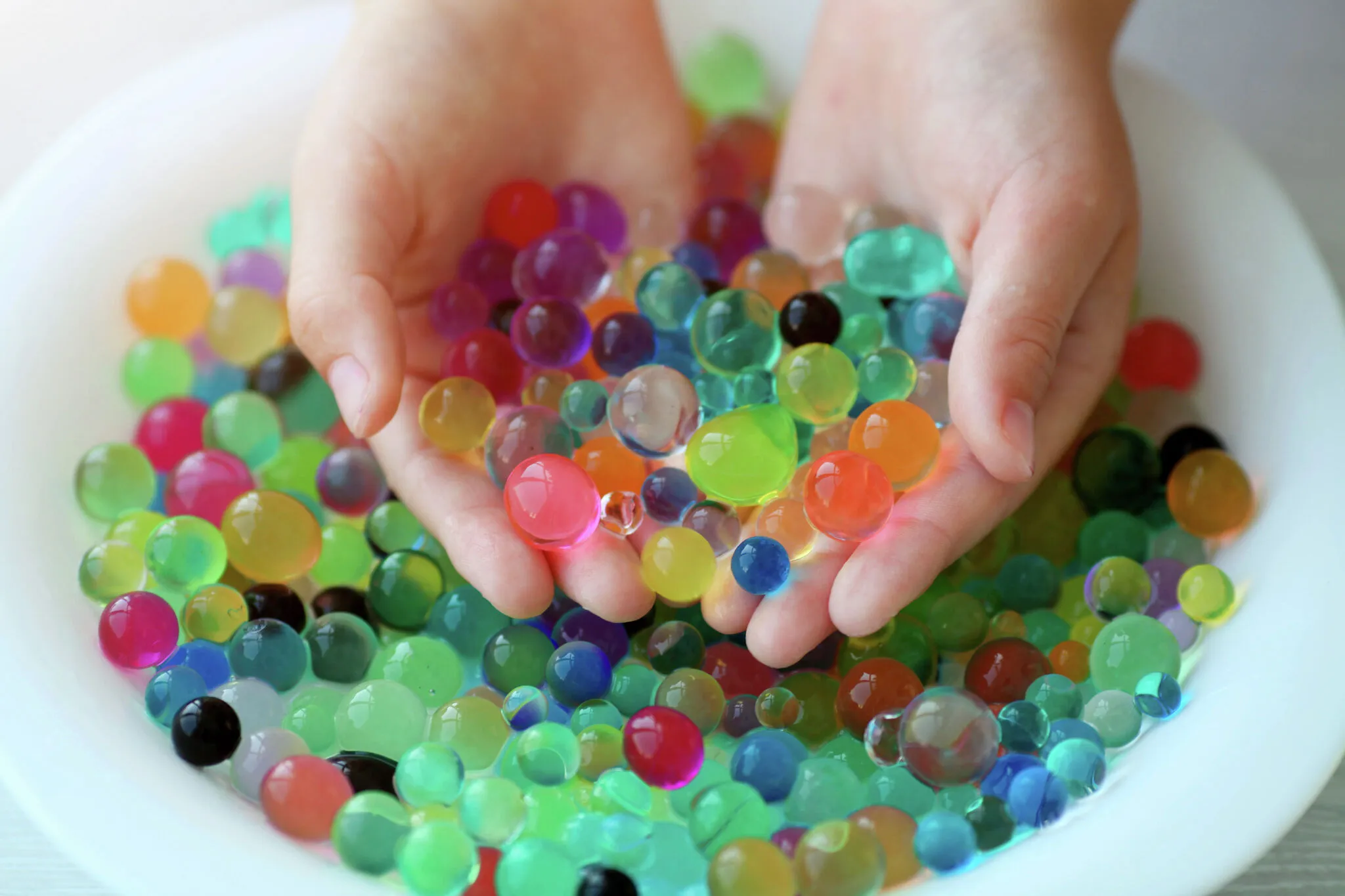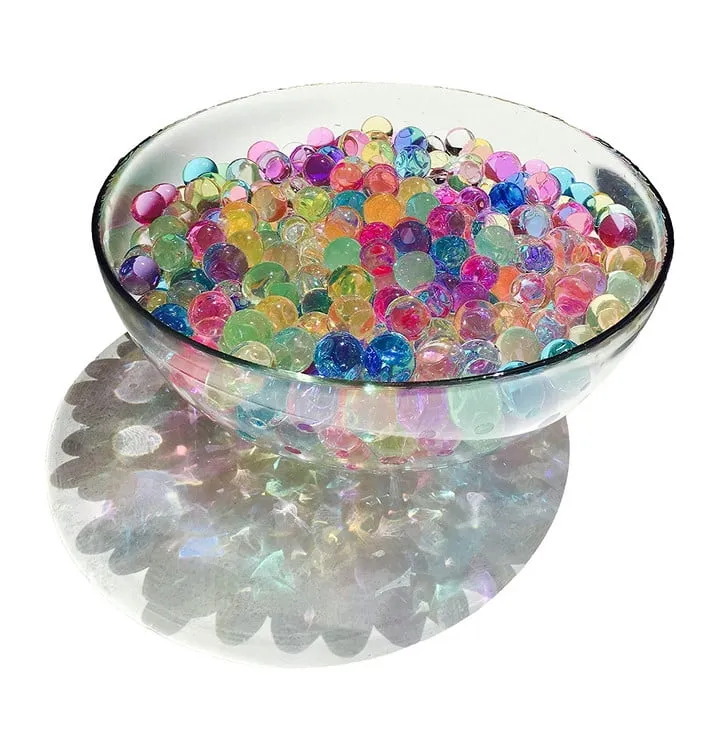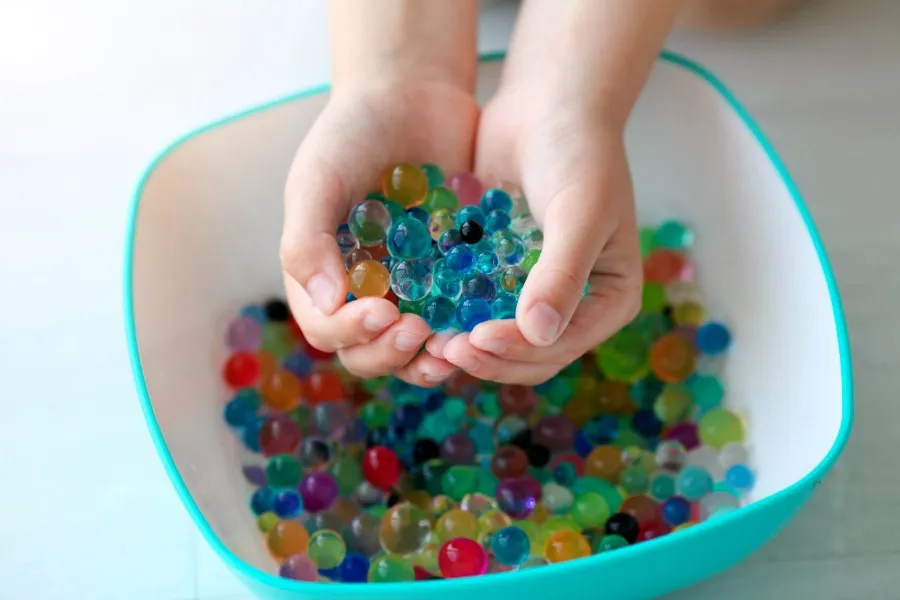Exploring the Magic of Water Beads: Uses, Benefits, and Safety
Water beads are everywhere. You’ve probably seen them in vases, sensory bins, or even in garden decorations. These colorful little...

Water beads are everywhere. You’ve probably seen them in vases, sensory bins, or even in garden decorations. These colorful little balls are more than just eye candy—they have a ton of uses. Let’s dive in and see why they’re so popular.
What Are Water Beads?
Water beads, also called Orbeez or gel beads, are tiny spheres made from a polymer called polyacrylamide. The magic happens when you add water. They grow. And I mean, grow. These beads can soak up up to 100 times their weight in water. They turn from small, dry beads to squishy, bouncy balls. Cool, right?
For more information about water beads or water crystal gel or gel beads, Read this Wikipedia Report.
How Do Water Beads Work?
So, what’s going on inside these beads? Polyacrylamide, the material they’re made of, acts like a sponge. Drop them in water, wait a few hours, and boom—they swell up and transform into squishy, bouncy spheres. It’s like magic. But it’s science.
What Are Water Beads Used For?
Gardening Made Easy
Got plants that need constant moisture? Water beads have you covered. They slowly release water into the soil. Perfect for indoor plants or succulents that crave consistent hydration. Just place them in the soil and forget about them.
Home Décor
Want a pop of color? Water beads are your answer. Fill a vase, bowl, or jar, and you’ve got instant decor. And the best part? They’re reusable. Let them dry out, rehydrate, and use them again.
Sensory Play for Kids
Water beads are a hit with kids. They love squishing and rolling them. It’s not just fun—it also helps improve motor skills. Plus, they’re great for calming kids down and helping them focus.
A Global Favorite
From classrooms to gardens, water beads are loved worldwide. It’s no wonder they’re so popular.

Read More : What Foods Should I Feed My Chickens?
What Are Water Beads Made Of?
Water beads are made from polyacrylamide. It sounds complicated, but don’t worry—it’s safe. It’s also biodegradable, meaning it naturally breaks down over time. That makes water beads a more eco-friendly choice than plastic alternatives.
The Pros of Water Beads
- Super easy to use: Add water, wait, and you’re done.
- Reusable: Dry them out and use them again.
- Low maintenance: Just place them, and they do their job.
- Eco-friendly: Many are biodegradable.
- Fun and colorful: They’re glossy and playful.
- Great for sensory play: Perfect for tactile exploration.
The Cons of Water Beads
- Choking hazard: Keep a close eye on young kids while they play.
- Fragile: Handle with care—they can tear.
- Short lifespan: After a while, they stop absorbing water.
- Messy: When dry, they break into tiny pieces.
- Disposal issues: Don’t throw them away. Let them decompose or compost.
How to Use Water Beads Safely
Safety comes first. Here’s how to handle water beads properly:
- Supervise playtime: Always watch young kids closely.
- Soak them right: Don’t leave them in water too long or they’ll get too mushy.
- Dispose properly: Don’t just toss them. Let them break down or compost.
Conclusion
Water beads are more than just pretty to look at. They’re useful, too. Whether you use them in your garden, for décor, or for sensory play, they’re easy to work with. And, they’re eco-friendly and reusable! Just remember to handle them gently, and keep them out of reach of small children.
Give water beads a try. They’ll add a little magic to your home, garden, or playtime.

FAQs
1. How Does Water Bead Up on Wax Paper?
Water beads up on wax paper because of the hydrophobic nature of the wax coating. The water is repelled by the surface, causing it to form droplets that sit on top rather than soaking in. This makes the surface smooth and prevents the water from spreading, resulting in the water beads’ distinct round shape.
2. What Are Water Beads Used for in Vases?
Water beads for vases are a popular decorative choice. They can be used to add color, texture, and a modern aesthetic to any room. Clear water beads are often chosen for vases to create a clean, elegant look, especially when paired with flowers or candles. They also help keep the stems hydrated, making them a functional and decorative addition.
3. What Are Clear Water Beads?
Clear water beads are simply colorless versions of the popular water beads. They are transparent, creating a sleek and sophisticated look for decorations. Clear water beads are often used in vases, sensory bins, or centerpieces where a more subtle appearance is preferred.
4. What Should I Do If My 2-Year-Old Swallowed a Water Bead?
If your 2-year-old swallowed a water bead, it’s important to stay calm. Water beads are generally made from safe, non-toxic materials. However, because they can expand inside the stomach, it is crucial to monitor your child closely. Contact your doctor or poison control immediately for guidance, and do not induce vomiting unless advised by a medical professional.
5. Are Water Beads Safe for Kids?
Water beads for kids can be safe when used appropriately. They offer great sensory play opportunities, helping children develop motor skills. However, it’s important to supervise young children, as water beads can pose a choking hazard if swallowed. Ensure the beads are stored safely and out of reach of younger kids.
6. What is a Water Beads Toy?
A water beads toy is any toy or sensory activity that uses water beads as part of the play experience. These toys often encourage tactile exploration and can include sensory bins filled with colorful water beads, squishy toys made from water beads, or tools to roll and manipulate the beads. They’re fun and educational for kids of all ages.
7. Can I Plant in Water Beads?
Yes, you can plant water beads! When used as a growing medium, water beads provide consistent moisture to plants. You can place small plants or succulents in containers filled with water beads to help keep their roots hydrated. They’re especially beneficial for indoor plants that require steady moisture but not too much water.
8. How Do I Plant with Water Beads?
To planting with water beads, simply place the beads at the bottom of a container and gently push the roots of your plants into the beads. The beads will slowly release moisture as the plant grows. This method works best with smaller plants, like succulents or herbs, and helps keep them hydrated without the risk of overwatering.
9. What Are Water Beads Centerpieces?
Water beads centerpieces are a creative and stylish way to decorate tables for events like weddings, parties, or home décor. By filling a vase or jar with water beads, you can add a vibrant pop of color and texture.



